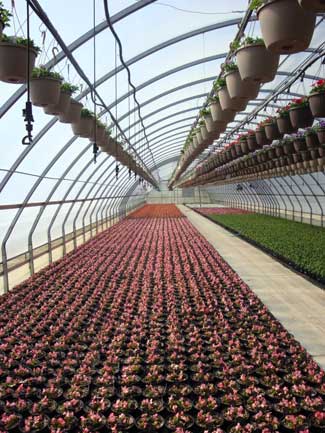Greenhouse shading options
Now is the time to begin shading greenhouses to prevent excessively warm temperatures.
 The combination of cool temperatures and high light levels
are ideal conditions for the production of most floriculture crops. Those of
you who have visited Spring
Trials in California have seen the very high quality plants that are on
display. That high quality is achieved by growing crops cool and with very high
light.
The combination of cool temperatures and high light levels
are ideal conditions for the production of most floriculture crops. Those of
you who have visited Spring
Trials in California have seen the very high quality plants that are on
display. That high quality is achieved by growing crops cool and with very high
light.
Those of us in the upper Midwest are finally receiving high light levels, which can lead to high greenhouse temperatures. To mitigate high greenhouse temperature and reduce plant watering requirements, shading is typically used in greenhouses beginning in late April or early May. An increasing number of greenhouses have retractable shade or energy curtains, which makes shading easy. There are several advantages of these curtains, most notably that they can be used during periods of high light (for shading) and at night (to reduce heat loss), and not on cloudy days.
However, a large amount of greenhouse production space does not have a retractable curtain. Another good option is to apply whitewash to the exterior of the glazing material. An advantage of whitewash is that it reflects sunlight before that energy enters the greenhouse and increases temperature. In addition, whitewash can improve the uniformity of the light inside a greenhouse, as it scatters the light and reduces shading from structures.
A common shading factor for whitewash is around 40 percent. Be careful not to apply too much, as low light conditions lead to lower plant quality. More information on managing light in the greenhouse can be found at the MSU Floriculture website.
Dr. Runkle's work is funded in part by MSU's AgBioResearch.



 Print
Print Email
Email



